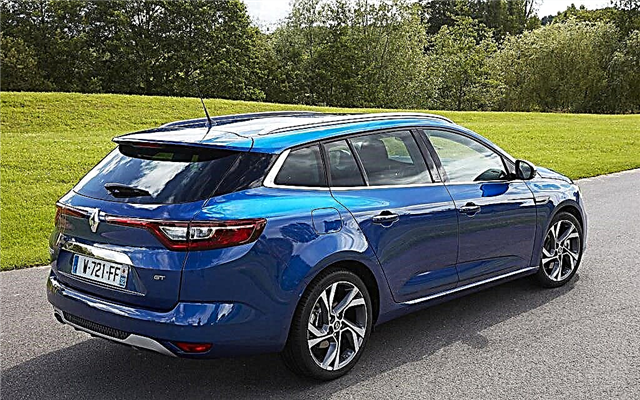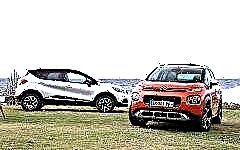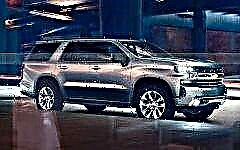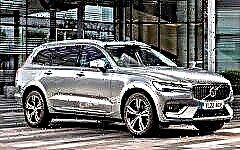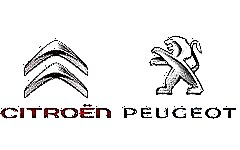

The content of the article:
- Peugeot 108 and Citroen C1
- Peugeot 301 and Citroen C-Elysee
- Citroen Spacetourer and Peugeot Traveler
It so happened that Peugeot and Citroen cars, which are part of the same PSA Group, are not very popular among Russians, which is once again confirmed by the sales statistics.
So, in 2018, 5514 Peugeot models and a total of 3709 Citroen cars were sold in Russia. For comparison, 135208 Russians became the owners of Renault cars last year, so it will not work to write off their failed sales to the country of origin.
But this time is not about that - we would like to find out which of the brands is better to give preference to the person choosing between Peugeot and Citroen. To do this, we will compare several similar cars and, based on the results of their comparison, we will try to draw some conclusions.
Peugeot 108 and Citroen C1

In 2014, both brands updated their compact hatchbacks, the Peugeot 108 and Citroen C1, which are positioned as purely city cars.
In comparison with their predecessors, the cars have radically changed externally and internally, and also received a slightly modernized technical filling. Both cars have a stylish and attractive appearance, as well as similar dimensions.
It is also worth noting that, unlike its predecessors, which looked more like a woman's car, a man is not shameful at the wheel of new products. The interior design, apart from some design solutions, is identical: the same central unit, dashboard, quality materials and ergonomics.
From the point of view of power plants, there is also full parity: a 1-liter 68 or 72-horsepower VTi gasoline engine, developing 95 and 93 Nm of torque, respectively. A couple of them can be a manual gearbox or "automatic", allowing to accelerate to a maximum of 160 km / h and consume about 4.3 l / 100 km in a combined driving mode.
But in terms of price and level of equipment, everything is not so simple. For comparison, the minimum cost of a three-door Citroen C1 in Europe starts at 9.8 thousand euros, while the Peugeot 108 will cost at least 10.9 thousand euros.
The situation is similar with the equipment - in the top-end configurations Peugeot is somewhat richer.
Peugeot 301 and Citroen C-Elysee

In November 2016, both automakers rolled out to the market updated versions of the Peugeot 301 and Citroen C-Elysee, which received noticeable visual changes, but practically did not change inside. Examining the appearance of cars, you involuntarily catch yourself thinking that Peugeot has a more masculine appearance, while the C-Elysee is more versatile - equally well suited to both men and women.
Car interiors, with the exception of decorative elements, are identical, and this applies not only to the quality of the materials used and ergonomics, but also to roominess.
It is worth paying tribute to the French engineers and designers, since three adult riders can easily fit inside the "twin brothers".
The boot volume is also identical - 506 liters in the five-seater and 1332 liters in the seven-seater cabin layout.
The line of power units is presented:
- 1.2-liter gasoline engine PureTech, the power of which has increased from 72 to 82 "horses". With it, the car can reach a maximum of 160 km / h, accelerate from zero to a hundred in 12.9 seconds. and consume about 5 l / 100 km in mixed mode.
- 1.6-liter VTi petrol engine producing 115 hp. with. and 150 Nm of torque. This is enough for the car to develop the first hundred in 9.4-10.8 seconds, can accelerate to a maximum of 188 km / h and consume about 7.3 l / 100 km.
- 1.6-liter diesel generating 92 hp and peak 230 Nm of torque. With such an engine, a car is capable of consuming only 4.3 liters of fuel per hundred, changing the first hundred in 11.2 seconds. and accelerate to 180 km / h.
The level of equipment, as well as the cost of the cars, are comparable, although the C-Elysee will still cost a little more. However, this applies for the most part to the basic configurations, while in the top-end equipment the difference is almost imperceptible.
However, the question immediately arises - is it really worth paying for a budget, albeit in top-end equipment, Peugeot 301 / Citroen C-Elysee, if for the same money you can buy, for example, Skoda Rapid, which in direct comparison will be practically better in all respects?
Citroen Spacetourer and Peugeot Traveler

In 2016 in Geneva, Citroen and Peugeot simultaneously unveiled the Spacetourer and Traveler minivans, respectively. Cars reached the Russian market only in 2017.
As in the case with the previously considered cars, the external differences of the cars are reduced to the presence of nameplates and the different design of the front of the body.
In our opinion, the specialists from Peugeot managed to make the "face" more expressive and, we will not be afraid of this word, presentable. Depending on the length of the body and the version, the interior of minivans can accommodate from 5 to 9 people, and even in the maximum capacity version, the buyer will be able to count on 550 liters of loading space.
The engine range is identical:
- 1.6-liter HDi diesel producing 95 hp. and 215 Nm of torque. This is enough to change the first hundred in 15 seconds. and was able to accelerate to a maximum of 145 km / h, consuming an average of about 6 liters of fuel.
- 2-liter diesel engine of the HDi series, delivering 150 "horses" and peak 370 Nm of torque. This combination is enough for the car to reach a peak speed of 183 km / h and be able to overcome the first hundred in 12.3-12.7 seconds. The combined consumption is declared at around 6.3 l / 100 km.
It is important to note that the "junior" engine is aggregated with a 5-speed manual transmission, while the "senior" one is equipped with a 6-speed automatic transmission.
In the Russian market, the minimum price of Citroen Spacetourer starts at 2.149 million rubles, which exactly corresponds to the Traveler's pricing policy.
Vehicle behavior on the track, fuel consumption, equipment level and build quality are, plus or minus, comparable.

In the photo: Citroen C3 Aircross and Peugeot 2008
A similar situation will be when comparing the "heels" of Citroen Berlingo and Peugeot Rifter, but in the crossover segment the situation is somewhat different - here each of the manufacturers tries to stand out, which is especially noticeable when comparing subcompact SUVs in the face of Citroen C3 Aircross and Peugeot 2008, which have a radically different appearance and various technical stuffing.
Conclusion
In a direct comparison of most of the cars from the Citroen and Peugeot lineup, the user will find only a minimal number of differences.
Peugeot cars provide more conservative solutions, while Citroen is not afraid to experiment with exterior and interior filling - remember, for example, the external "Airbump" covers and a fully digital instrument panel.
However, if we consider cars from the point of view of technology, ride quality and level of equipment, it turns out that the choice of a car of a particular brand essentially boils down to the choice of a nameplate on the hood.

